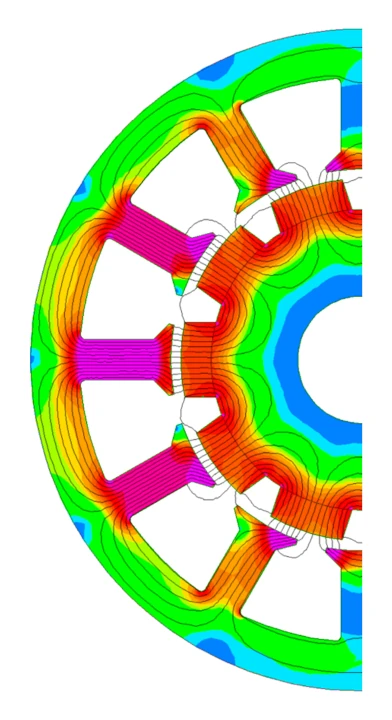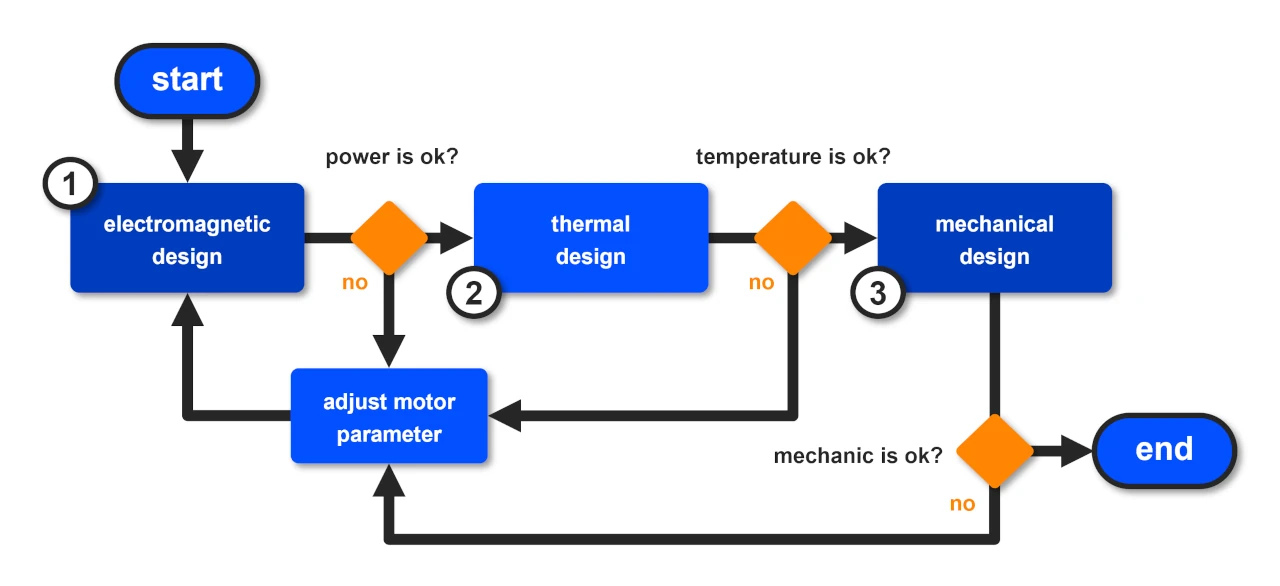Software:
- Maxwell
- Jmag
- MotorXP
- Speed
- Emdtool
- Motorsolve
- Femag
- Motorwizard
- Opera
- Fluxmotor
- QuickField
- Motor-cad
- Rmxpert

What software is required to design an electric motor and what steps are necessary to do so. The described procedure and software used for the design can be used for BLDC motors, AC motors and axial flux motors. There is a difference between software for the design of electric motors for analytical calculation and numerical simulation or also called FEM simulation. FEM simulations can be further divided into 2D and 3D simulations, which can be performed steady-state or transient. For these, there is both commercial and free software for the simulation and calculation of electric motors.

For the simulation of electric motors and the electric motor design, three different physical properties have to be investigated. Therefore, not only an electromagnetic simulation is needed for the motor design, but also a thermal simulation and a mechanical simulation. Mechanical simulation naturally includes the simulation of mechanical vibrations. Such mechanical vibrations can lead to unwanted acoustic noises. This is also referred to as acoustic simulation of electric motors and electric drives.
In electromagnetic design, the electric motor design is adjusted using analytical software until the performance of the electric motor is satisfied. The analytical design is then verified using 2D or 3D FEM software. A detailed description of the electric motor design process can be found here »
After the electromagnetic design, the cooling for the electric motor must be designed. Only with the help of the thermal simulation can it be determined how long the electric motor can provide its maximum power. The thermal design is checked using a 2D or 3D FEM simulation. If the electric motor becomes too hot, the electric motor design or the cooling must be adjusted.
Finally, the electric motor must be designed mechanically, such as the thickness of the shaft or the size of the bearings. The strength of the rotor and its dynamics must also be checked. This can be done using multi-body models or 3D FEM simulations. If it turns out that the rotor touches the stator, the air gap must be increased or the bearing adjusted.
Normally, the different physical simulations are performed separately. For certain operating points, it is assumed that the systems do not strongly influence each other or remain constant. There are also applications with electric motors where it makes sense to use a multiphysics simulation. Here, the physical simulations are directly coupled with each other, which usually requires a lot of computing power and time.
There is a wide range of software for the design of electric motors and each software has its advantages and disadvantages. It is important to differentiate if the software is for analytical calculation or numerical FEM simulation. Another important evaluation criterion of the software is the calculation speed and functionality to be prepared for future electric motor technologies.
Software:

Free electric motor design software is usually not free, but is usually subject to a license that allows the software to be freely used for design for specific purposes. Often it is also called open source software, where the source code is open. Please always read the license of the electric motor software carefully to find out for which purposes the software is allowed to be used. Software that can be used free for certain purposes is Onelab, Femm and Elmer. The open source software or free motor design software is usually available as a download on the pages of the respective development projects.